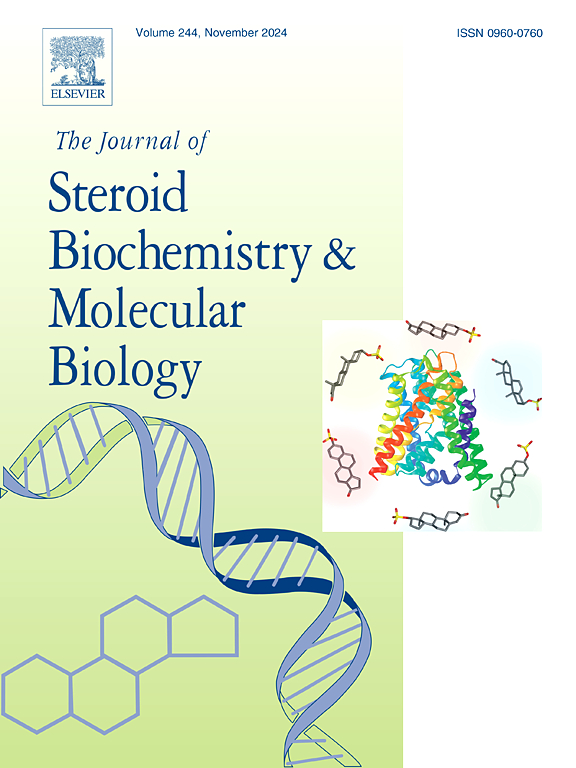Research progress on the function, expression and enzyme activity regulation of 17β-HSD1 in mammals
IF 2.5
2区 生物学
Q3 BIOCHEMISTRY & MOLECULAR BIOLOGY
Journal of Steroid Biochemistry and Molecular Biology
Pub Date : 2025-09-17
DOI:10.1016/j.jsbmb.2025.106864
引用次数: 0
Abstract
17β-Hydroxysteroid dehydrogenase 1 (17β-HSD1) can catalyze the reduction of the less active estrone (E1) to the more active estradiol (E2). It has a significant impact on the reproduction of female animals, follicular development, the development of the breasts and reproductive organs in reproductive-age women, as well as the physical health, bones and cardiovascular system of postmenopausal women. This review summarizes the research progress on the expression, biological function, and regulatory mechanisms of 17β-HSD1 in estrogen-dependent diseases, including cancer. It also discusses the role of 17β-HSD1 in female reproduction processes, such as follicle development, and the regulation of its enzyme activity by activin A and insulin-like growth factor 1 (IGF-1). Furthermore, the review explores how phosphorylation at key sites influences its enzyme’s activity, aiming to enhance the understanding of its regulatory mechanisms and improve the clarity of related research findings. This review systematically summarizes the research progress of 17β-HSD1 expression and enzyme activity regulation, which can provide theoretical reference for the development of animal breeding technology and the treatment of estrogen dependent diseases.
哺乳动物17β-HSD1的功能、表达及酶活性调控研究进展
17β-羟基类固醇脱氢酶1 (17β-HSD1)可以催化活性较低的雌酮(E1)还原为活性较高的雌二醇(E2)。它对雌性动物的繁殖、卵泡发育、育龄妇女乳房和生殖器官的发育,以及绝经后妇女的身体健康、骨骼和心血管系统都有重大影响。本文就17β-HSD1在雌激素依赖性疾病(包括癌症)中的表达、生物学功能及调控机制的研究进展进行综述。本文还讨论了17β-HSD1在女性生殖过程中的作用,如卵泡发育,以及激活素A和胰岛素样生长因子1 (IGF-1)对其酶活性的调节。此外,本文还探讨了关键位点的磷酸化如何影响其酶的活性,旨在加深对其调控机制的理解,并提高相关研究结果的清晰度。本文系统总结了17β-HSD1表达及酶活性调控的研究进展,可为动物育种技术的发展和雌激素依赖性疾病的治疗提供理论参考。
本文章由计算机程序翻译,如有差异,请以英文原文为准。
求助全文
约1分钟内获得全文
求助全文
来源期刊
CiteScore
8.60
自引率
2.40%
发文量
113
审稿时长
46 days
期刊介绍:
The Journal of Steroid Biochemistry and Molecular Biology is devoted to new experimental and theoretical developments in areas related to steroids including vitamin D, lipids and their metabolomics. The Journal publishes a variety of contributions, including original articles, general and focused reviews, and rapid communications (brief articles of particular interest and clear novelty). Selected cutting-edge topics will be addressed in Special Issues managed by Guest Editors. Special Issues will contain both commissioned reviews and original research papers to provide comprehensive coverage of specific topics, and all submissions will undergo rigorous peer-review prior to publication.

 求助内容:
求助内容: 应助结果提醒方式:
应助结果提醒方式:


